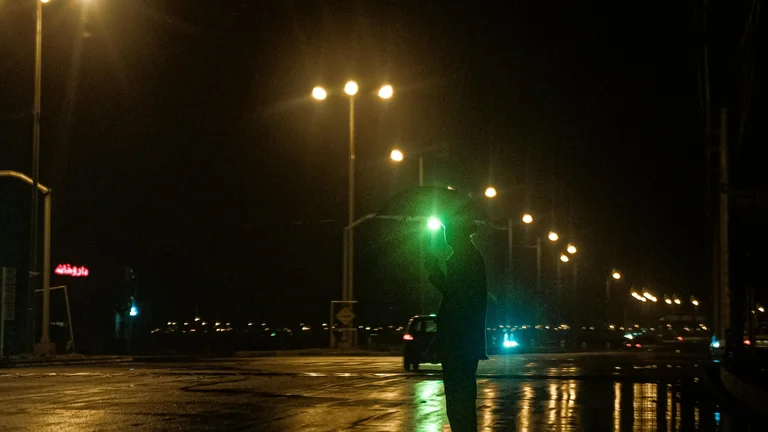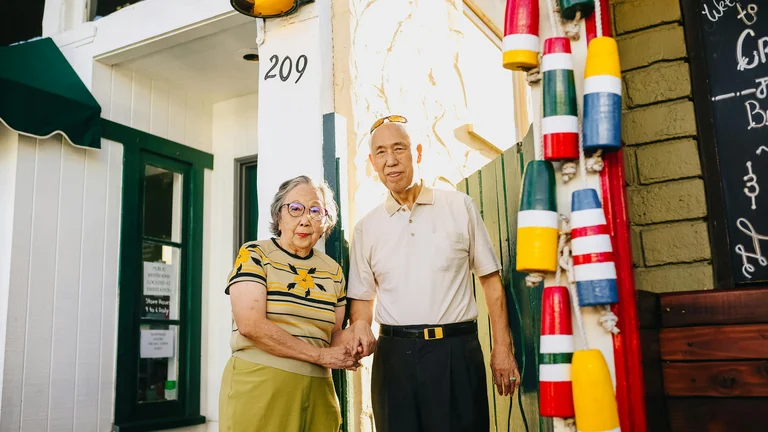Exploring the Significance of Love Letters in Korean Dramas

Love letters hold a unique place in the storytelling tradition of Korean dramas, often functioning as a pivotal device to convey emotions that words spoken aloud cannot fully represent. In Korean culture, where expressing feelings openly is sometimes restrained by social norms, the written word serves as an intimate channel for characters to reveal their deepest sentiments. Korean dramas utilize love letters not merely as plot devices but as profound symbols of vulnerability, intimacy, and emotional connection. The moments when a character receives or writes a love letter often mark important turning points in the narrative, revealing concealed emotions or catalyzing developments in relationships.
The emotional potency of a love letter scene in K-dramas rests on several layers: the effort put into the letter, the setting in which it is delivered or discovered, and the reaction of the recipient. Writers and directors carefully orchestrate these moments to maximize the impact, combining visual cues, lighting, background score, and actor expressions to evoke empathy from the viewers. As a result, such scenes often linger in the audience’s memory long after the series concludes. They encapsulate themes of hope, longing, confession, and sometimes heartbreak, making them a cornerstone of romantic drama storytelling.
Interestingly, love letter moments often bridge past and present timelines in Korean dramas, as letters might be unearthed years later, reigniting old feelings or revealing secrets forgotten or suppressed. This adds a layer of nostalgia and complexity to the timeline, enriching character development and plot architecture. Moreover, love letters in K-dramas reflect real cultural practices and societal transformations – while traditional handwritten letters evoke a sense of timeless romance, electronic messages often portray modern adaptations and challenges in relationships.
By understanding the nuanced role that love letters play in Korean dramas, one gains insight into not only the narrative techniques but also the cultural subtleties that underlie these emotionally charged exchanges. The subsequent sections delve into some of the most iconic and memorable "love letter" moments in Korean dramas, analyzing their context, impact, and enduring appeal.
Iconic Love Letter Scenes and Their Narrative Impact
Several Korean dramas have immortalized their love letter scenes, making them quintessential moments that define characters and relationships. A prime example is the drama "Reply 1988," where the exchange of handwritten letters encapsulates youthful innocence and the bittersweet pangs of first love. The authenticity of the letters reflects the era's slower-paced communication methods, highlighting the anticipation and excitement associated with waiting for a reply.
In "It’s Okay, That’s Love," love letters serve as a medium through which characters confront their vulnerabilities. The protagonist’s careful crafting of his emotions on paper contrasts with his difficulty in verbalizing feelings, portraying the letter as a safe space for honesty. This narrative approach underscores the therapeutic power of written expression in overcoming internal barriers to intimacy.
Another notable example is in "Coffee Prince," where a love letter is intertwined with humor and sincerity. The moment shyly delivering a letter to the beloved complements a narrative filled with gender role reversals and mistaken identities. This juxtaposition heightens the emotional stakes by combining lightheartedness and earnest affection within a single frame.
The lasting impact of these scenes is often tied to their simplicity and sincerity—the raw emotions that pulse beneath the words on the page translate powerfully to the screen. These moments often define the chemistry between leads, serving both as a declaration of love and a narrative catalyst that propels the story forward.
The following table summarizes some famous Korean dramas with particularly remarkable love letter moments, their narrative function, and thematic significance:
| Drama | Love Letter Moment | Narrative Function | Thematic Significance |
|---|---|---|---|
| Reply 1988 | Handwritten exchanges between childhood friends | Reveals adolescent feelings, builds nostalgia | Innocence, long-distance affection, patience |
| It’s Okay, That’s Love | Letter expressing hidden emotional struggles | Facilitates emotional healing and bonding | Vulnerability, self-acceptance |
| Coffee Prince | Awkward but heartfelt written confession | Highlights character growth and comedic relief | Love beyond societal expectations |
| Moon Lovers: Scarlet Heart Ryeo | Secret love letters during turbulent times | Intensifies dramatic tension in royal politics | Forbidden love, sacrifice |
| Weightlifting Fairy Kim Bok-joo | Notes revealing personal encouragement and affection | Strengthens friendships, hints romantic feelings | Support, youthful courage |
Stylistic Elements Enhancing Love Letter Scenes
The success of love letter moments in Korean dramas is not only rooted in dialogue or plot devices but also in the deliberate cinematic techniques applied during these scenes. Directors employ various stylistic tools to emphasize the emotional weight of a letter, often choosing close-up shots of hands writing or trembling while holding a letter to visualize vulnerability. Soft lighting or muted color palettes accompany scenes to create an intimate, almost sacred atmosphere.
Sound design is equally crucial. The absence of background noise or the inclusion of gentle instrumental music can amplify the emotional resonance of a letter being read or delivered. Sometimes, a diegetic sound like the rustling of paper or the scratching of pen on paper is amplified to direct the audience’s focus entirely on the act of writing or receiving the letter. This meticulous attention to auditory details invites viewers to dwell on the moment and the emotions encapsulated within it.
A distinctive narrative technique is using voice-over readings of letters, especially when the letter’s author is unable to express feelings face-to-face. This device allows deeper insight into the character’s mind, creating an immersive experience where viewers can internalize the thoughts and emotions conveyed. Additionally, flashbacks triggered by the reading of a letter often deepen the backstory and sharpen understanding of relationship dynamics.
Setting selection also plays a part in amplifying meaning. Letters found in unexpected places such as books, drawers, or hidden compartments evoke intrigue and emotional surprises. Public readings versus secret exchanges dramatically shift the tone—public reading creates tension and vulnerability, while private sharing emphasizes intimacy.
Collectively, these stylistic elements transform simple written words into powerful cinematic moments that resonate deeply with the audience, ensuring that love letter scenes remain among the most memorable aspects of Korean drama romance.
Emotional and Cultural Context of Love Letters in Korean Society and Dramas
Love letters as portrayed in Korean dramas mirror significant aspects of Korean cultural values related to communication, affection, and interpersonal relationships. Traditionally, Korean society emphasized indirect communication and reserved emotional displays, especially in public or formal contexts. Love letters thus served as socially acceptable outlets to express feelings otherwise constrained by etiquette and societal expectations.
Korean dramas effectively depict this cultural nuance by focusing on the tension between desire to confess love and the fear of rejection or social repercussions. Love letters become artifacts carrying hopes, fears, and even silent protests against normative behaviors. Within this cultural framework, the act of writing a love letter is imbued with courage and sincerity, elevating it beyond a mere romantic gesture.
In contemporary contexts, K-dramas explore how digital communication intersects with traditional modes of letter writing. Text messages, emails, and social media posts coexist or contrast with handwritten notes, reflecting evolving relational dynamics. Yet, the handwritten love letter often symbolizes authenticity and timelessness, making its depiction in dramas evocative and appealing to a broad audience.
Furthermore, generational differences highlighted in dramas reveal how older characters sometimes favor tangible letters, while younger ones lean towards ephemeral digital forms. This contrast provides dramatic tension but also points to a blend of tradition and modernization within Korean society.
The following list outlines key cultural factors influencing the portrayal of love letters in Korean dramas:
- Emphasis on indirect expression of emotions due to societal norms
- The historic significance of calligraphy and handwritten notes as artforms
- Interplay between Confucian values and modern dating practices
- Generational attitudes toward romantic communication
- The nostalgic value of physical letters in a digital age
Noteworthy Examples of Love Letters and Their Psychological Dimensions
Examining specific love letter moments reveals psychological layers that deepen the narrative. Take, for instance, the drama "Moon Lovers: Scarlet Heart Ryeo," where love letters exchanged between royal characters possess a dual quality: romantic confession and political risk. The letters encapsulate forbidden emotions in a repressive context, illustrating the characters’ internal conflicts between duty and personal desire.
In "Weightlifting Fairy Kim Bok-joo," a letter functions as encouragement during moments of self-doubt, demonstrating how love letters can extend beyond romantic confession to include affirmation and emotional support. This broadens the scope of what love letters represent in Korean dramas, showing them as vehicles for various forms of affection and interpersonal sustenance.
From a psychological perspective, reading or receiving a love letter often triggers cognitive and emotional reactions such as excitement, anxiety, relief, or even sorrow. Dramas succeed by portraying these reactions authentically, enabling the audience to empathize deeply. The slow unfolding of emotions through letter reading creates tension and anticipation, mirroring real-life dynamics of romantic communication.
Characters’ decisions to write or withhold letters engage with themes of trust, fear of vulnerability, and hope. These explorations reflect human experiences universally but gain particular resonance within Korean cultural contexts where indirect expression is common.
Here is a list of psychological themes commonly explored through love letter moments in Korean dramas:
- Fear of rejection and social judgment
- Longing for connection amidst uncertainty
- Expression of hidden identities or feelings
- Balancing honesty and protection of self or others
- Hope as a motivating force in relationships
Step-by-Step Guide to Recreating Authentic Love Letter Moments Inspired by K-Dramas
For enthusiasts inspired by Korean dramas’ romantic authenticity, recreating love letter moments involves understanding core elements that make them resonate. While writing a love letter might seem straightforward, K-dramas reveal subtle nuances contributing to their emotional power. Below is a step-by-step guide designed to capture the essence of a genuine K-drama love letter scene:
- Choose the Appropriate Medium: Decide between handwritten or printed letters based on character personality and story context. Handwritten notes often suggest deeper intimacy and effort.
- Set the Scene Thoughtfully: Select meaningful locations—quiet parks, nostalgic settings, or private indoor spaces—to enhance emotional ambiance.
- Craft Expressive Language: Use sincere, simple, and heartfelt wording. Avoid excessive formality or flowery language; genuine emotions resonate better when uncluttered.
- Incorporate Visual Details: Add illustrations, pressed flowers, or small personal touches that reinforce the letter’s sincerity.
- Plan Delivery Method: Whether hand-delivering, leaving in a discreet spot, or mailing, the delivery style impacts narrative tension and intimacy.
- Consider Timing and Context: Align the letter exchange with a pivotal point in the relationship to maximize dramatic or emotional effect.
- Include Reaction Shots or Follow-ups: Show recipients’ responses subtly through expressions or subsequent interactions, rather than explicit declarations.
These steps reflect common dramaturgical choices in Korean dramas, enabling fans or creatives to recreate scenes that maintain emotional engagement and authenticity inspired by their favorite series.
The Role of Love Letters in Character Development and Plot Twists
Love letters often serve critical roles in shaping character arcs and introducing unexpected plot developments within Korean dramas. A letter may reveal a character’s true feelings previously concealed due to fear, sparking a turning point in relationships. It might also expose secrets, create misunderstandings, or clarify ambiguous situations, thereby driving dramatic tension.
For example, in "Crash Landing on You," written messages act as emotional anchors tying the protagonists across physical and ideological divides. The delivery and discovery of letters add layers of suspense and hope, helping characters grow from guarded individuals into trusting partners. Similarly, in "Goblin," letters and notes factor into existential themes about fate, memory, and redemption, contributing to complex character motivations.
Plot twists triggered by love letters are often narratively satisfying, blending emotional payoff with plot complexity. Whether a letter discloses hidden pasts, misdirects suspicion, or renews romance, it enriches the story fabric, elevating the stakes for all involved characters.
In these contexts, love letters become more than romantic gestures, acting as narrative devices that propel transformation and resolution. Writers harness this potential to weave nuanced and emotionally textured stories that captivate audiences.
Diverse Portrayals of Love Letters across Different Genres in Korean Dramas
While romance is the most obvious genre for love letter scenes, Korean dramas across various genres incorporate them in distinctive ways. In historical sagas, love letters might be encoded with hidden meanings or symbols to navigate political intrigue and societal restrictions. In thrillers, a cryptic letter can function as a clue or trigger for suspenseful developments. Even in slice-of-life or comedy dramas, letters can facilitate warm, humorous, or bittersweet moments that underscore human connection.
For instance, in fantasy dramas like "Hotel Del Luna," letters from the past tie supernatural elements with emotional backstories, enriching both narrative complexity and character empathy. In crime or melodrama series, a letter might reveal motives or betrayals, adding dramatic weight. This flexibility demonstrates the wide-ranging applicability of love letter moments beyond conventional romance.
These variations in portrayal highlight the thematic and emotional versatility of love letters, allowing Korean dramas to innovate while connecting with universal experiences of communication and affection.
Table of K-Drama Genres and Typical Love Letter Functions
| Genre | Typical Love Letter Function | Example Drama |
|---|---|---|
| Romance | Confession, deepening relationships | Reply 1988 |
| Historical | Secret communication, political subtext | Moon Lovers: Scarlet Heart Ryeo |
| Fantasy | Linking past and present emotions | Hotel Del Luna |
| Melodrama | Revelations, emotional conflict | Something in the Rain |
| Thriller | Clues, misdirection | Signal |
| Comedy | Humor infused confession or misunderstanding | Coffee Prince |
List of Practical Applications of Love Letter Scenes for Scriptwriters and Filmmakers
- Deepening character emotional layers through internal monologue
- Enhancing dramatic tension by revealing secrets
- Facilitating non-verbal communication in culturally restrained contexts
- Creating nostalgic or reflective moods via flashbacks
- Enabling plot progression with minimal dialogue
- Juxtaposing traditional and modern communication methods
- Generating audience empathy through authenticity and vulnerability
FAQ - Best “Love Letter” Moments in Korean Dramas
Why are love letters so significant in Korean dramas?
Love letters in Korean dramas are significant because they provide a symbolic and intimate way to express emotions that characters may find difficult to verbalize due to cultural norms emphasizing indirect communication. They often serve as key narrative devices that reveal hidden feelings, deepen relationships, and catalyze plot developments.
Which Korean drama features the most memorable love letter scenes?
While many Korean dramas showcase memorable love letter scenes, 'Reply 1988' is often cited for its authentic depiction of handwritten letters that convey youthful innocence and nostalgia, making its love letter moments particularly impactful.
How do Korean dramas use love letters to develop characters?
Korean dramas use love letters to offer deeper insight into characters’ inner emotions and vulnerabilities, often revealing feelings they cannot express openly. These scenes highlight personal growth, overcoming fears, and building trust within relationships.
What stylistic techniques enhance love letter scenes in Korean dramas?
Directors enhance love letter scenes through close-up shots of handwriting, soft lighting, subtle sound design emphasizing paper sounds, voice-over readings, and meaningful settings. These visual and auditory elements create intimacy and heighten emotional impact.
Are love letters depicted differently across K-drama genres?
Yes, love letters serve varied functions depending on the genre. For example, in historical dramas they might carry secret messages with political implications, in thrillers they can act as clues, while in romance they primarily express heartfelt confessions.
Love letter moments in Korean dramas uniquely capture the subtlety and depth of romantic expression, serving as pivotal narrative and emotional devices that resonate deeply with audiences. These scenes blend cultural nuances with cinematic artistry, making them unforgettable portrayals of intimacy and vulnerability across diverse genres.
Love letter moments in Korean dramas represent a profound blend of cultural tradition, emotional expression, and narrative craftsmanship. They visually and narratively crystallize intimate emotions that resonate across diverse storylines and genres. From handwritten confessions filled with youthful longing to secret messages laden with political risks, these scenes create pivotal turning points that deeply engage viewers. The meticulous use of cinematic techniques amplifies their emotional gravity, rendering love letters as timeless tokens of affection and vulnerability. Their enduring popularity highlights a universal human longing for connection and understanding, making them indispensable elements in the rich tapestry of Korean drama storytelling.






